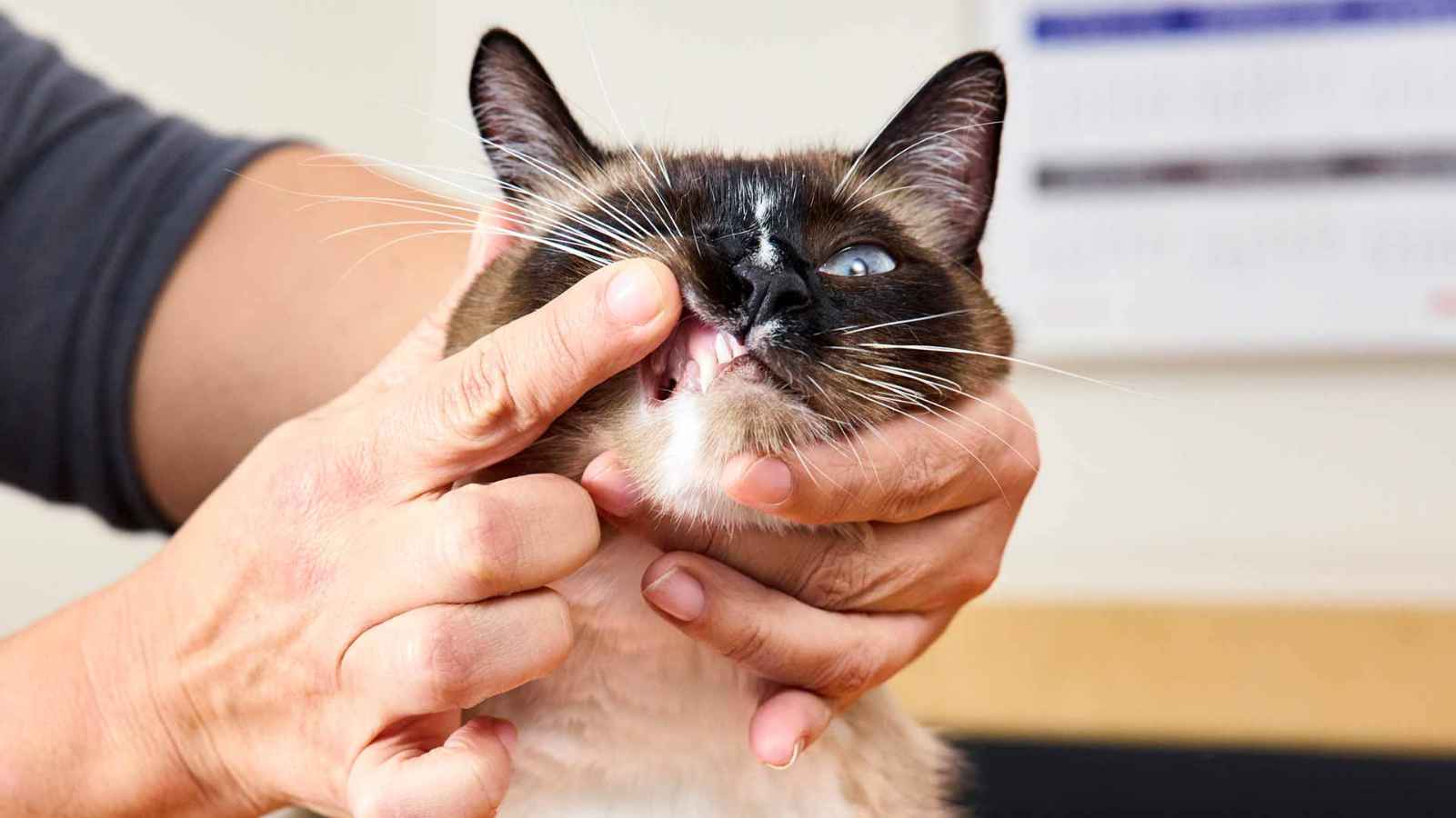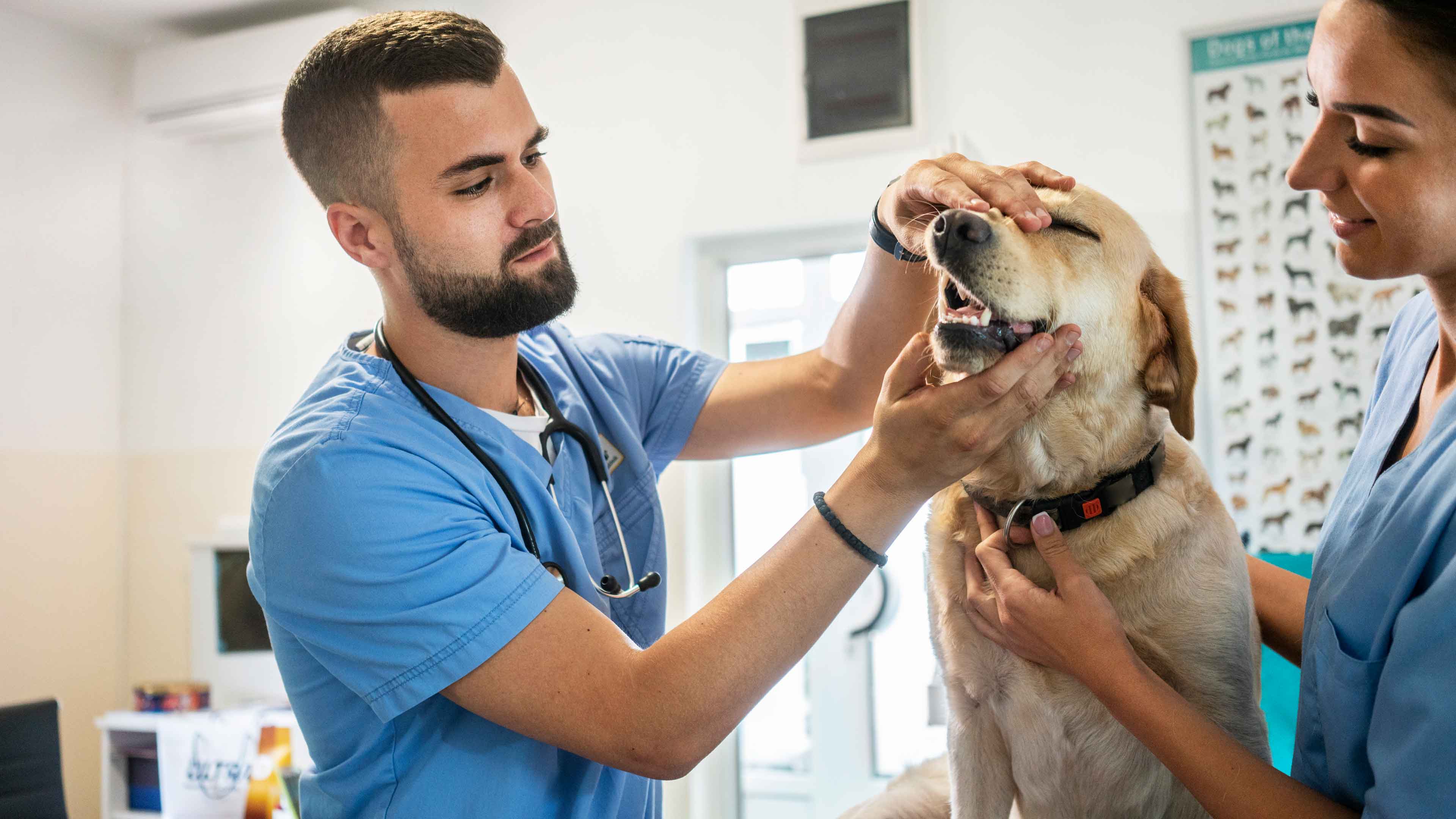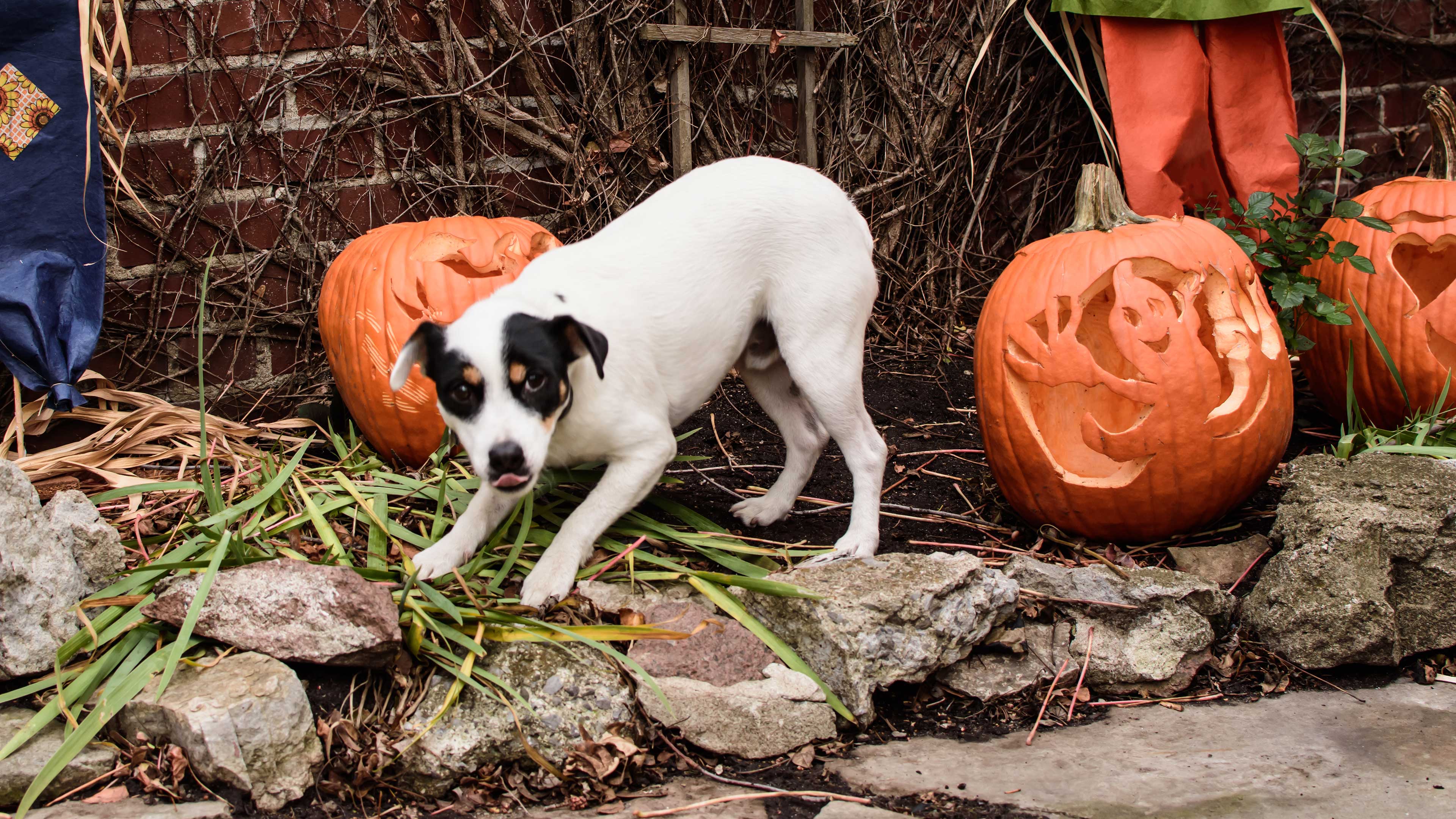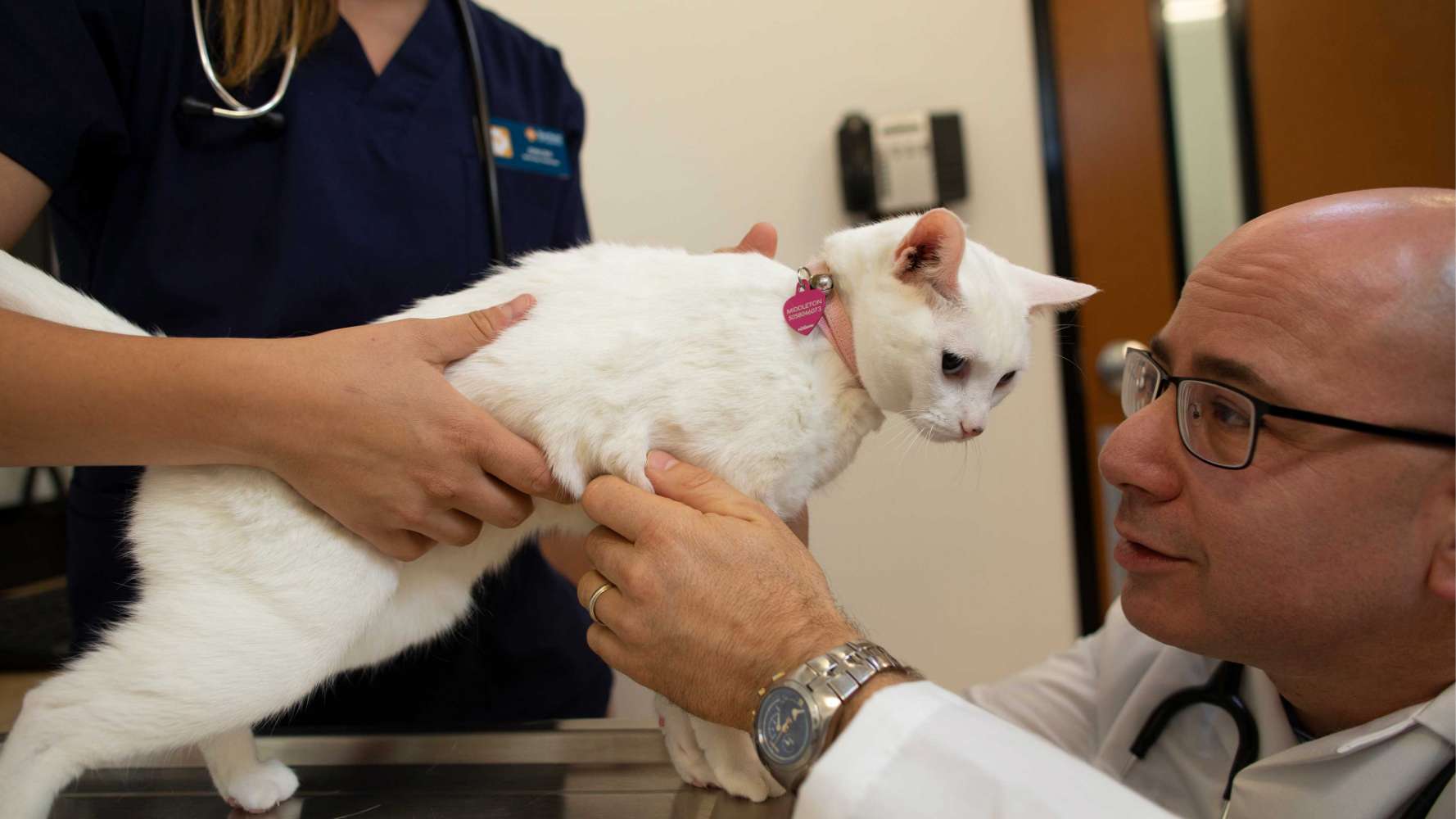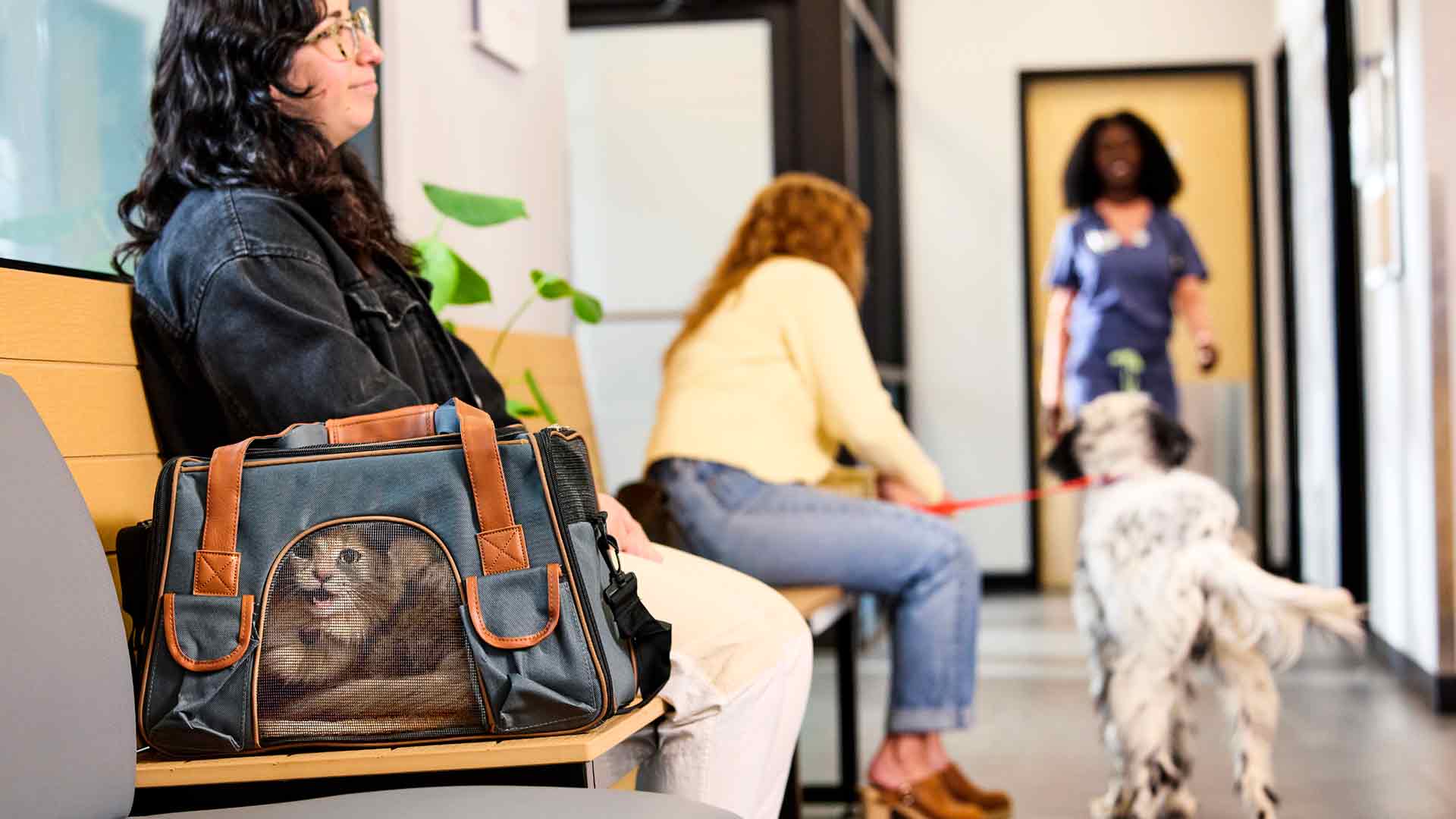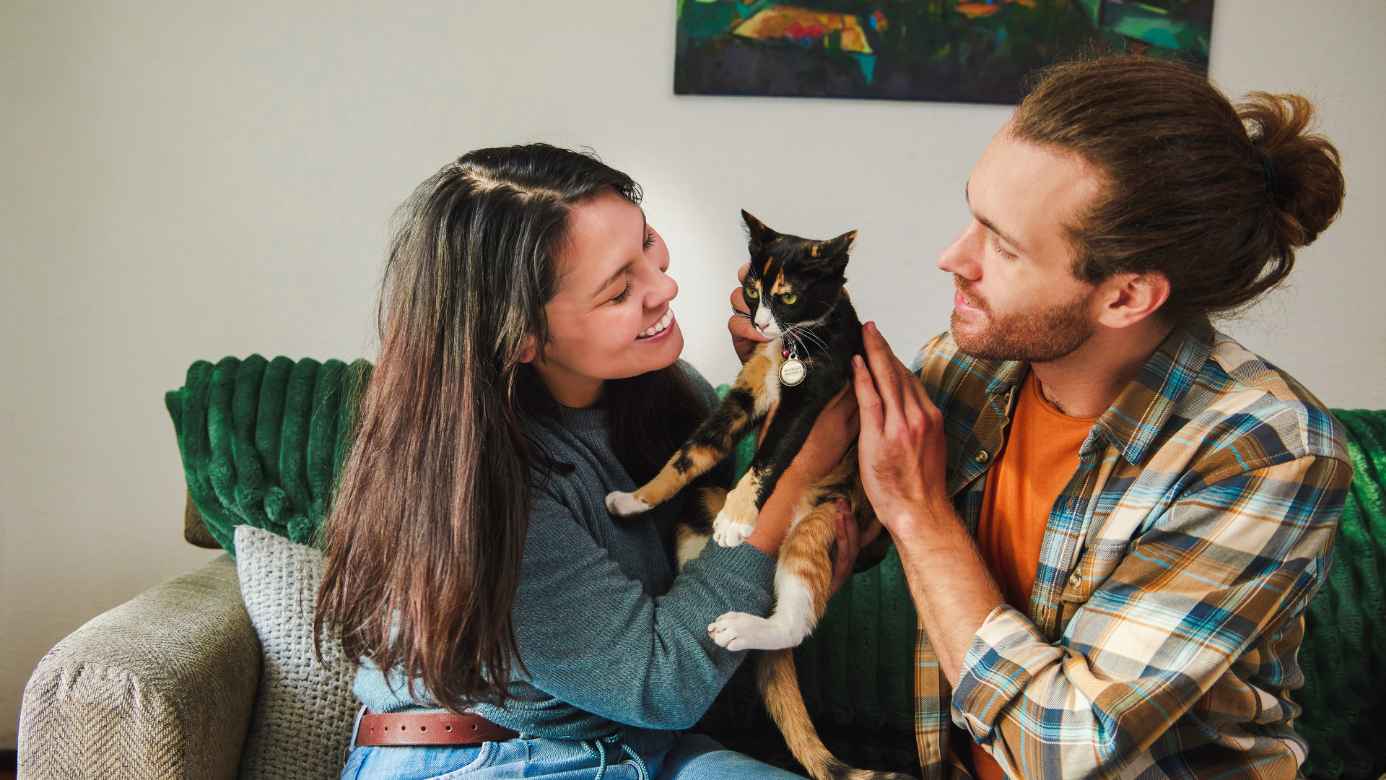why early dental care is important for dogs and cats
What is good oral health care?
There are two main ways to help keep your pet’s teeth clean.
Regular dental cleanings at the vet
Professional dental cleanings can help remove plaque and tartar and screen for periodontal disease. We’re big fans of dental cleanings here at Banfield, and here’s a little breakdown of how your pet’s cleaning works:
- First appointment: We’ll complete a physical exam and check for tartar and dental disease. (This is without anesthesia.)
- Second appointment: We’ll run a preanesthetic exam with blood testing to ensure your pet is ready for anesthesia.
- Dental cleaning: It’s cleaning time! This includes an ultrasonic dental cleaning, tooth polishing, and hand scaling above and below the gumline. While under anesthesia, we can look closely at all the things we can’t see when your pet is awake. And we’ll check for anything else that might require an additional dental appointment. You can also add radiographs that give your veterinarian a complete view of your pet’s mouth to assess tooth root health and the tissue/bone surrounding the tooth root. This is also crucial to ensuring any extraction is fully removed.
- During or after cleaning: While your pet is under anesthesia or once they’re awake, we’ll contact you with any care recommendations that we discover during the procedure. Although we’d love to have these conversations with you before your pet is under anesthesia, we can’t fully evaluate your pet’s oral health until then, so don’t be surprised by any unexpected things we might discover.
- Ready to go home: We’ll monitor your pet after recovery and call you as soon your pet is ready to head home.
Dental care at home
Beyond your pet’s professional dental cleaning, it’s important to stay on top of brushing at home. We know this sounds impossible, but we’re here to help!
- Get them acclimated: You’ll want to start by getting your pet used to having their teeth and lips touched (i.e., having your fingers in their mouth). Don’t force it, and go at whatever speed your pet wants.
- Ready, set, brush: Once they’re used to your fingers in their mouth, it’s time to brush. Use a pet-specific toothbrush and toothpaste (human toothpaste is a no-no). Let them taste it, and then slowly start working the brush in a circular pattern, 30 seconds on each side.
- Smile and pat yourself on the back (and your pet too): You did it! Now try to do this three times a week to help keep your dog’s or cat’s mouth tartar-free.
To stay on top of your pet’s oral health, check out our Optimum Wellness Plan Active Care Plus and Special Care plans. These plans include all the amazing, discounted services in our regular Optimum Wellness Plan PLUS professional yearly dental cleanings and optional radiographs that can help prevent painful gum disease, tooth loss, and potential heart and kidney disease.
 Mites and mange
Mites and mange Podcast - Not Just Fluff
Podcast - Not Just Fluff
